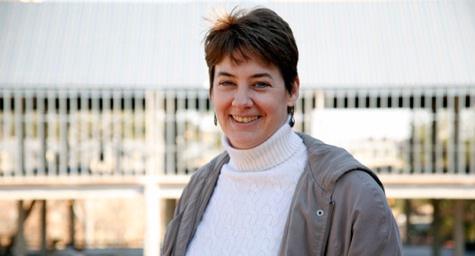ISC Brings New Possibilities for Scientific Learning
A view for the future.
What goes through Associate Professor of Psychology Pamela Hunt’s
mind whenever she sees William and
Mary’s new Integrated Science Center (ISC), which is under construction
next to Millington Hall? “Hurry up!” she says with a laugh.
Hunt, who is also associate director of interdisciplinary neuroscience,
is excited about the possibilities that the ISC will bring for students
and faculty alike. “The new structure is being built for today’s
technology, but also with a view for the future that allows it to be
modified as technology and programs demand,” Hunt says. “That’s a good
vision for the ISC, and the amount of research — as well as quality of
research — is going to increase tremendously.”
The $54.3 million facility — $12 million of which must come from
private funds — will help integrate the College’s science programs,
allowing faculty and students in biology, chemistry and psychology
to enjoy increased opportunities for multidisciplinary research. It
will also be crucial to the College’s continued efforts to attract and
retain the best faculty and students as well as apply for grants from
major foundations and agencies.
Hunt, whose interests include fetal alcohol spectrum disorders, says
that the facility will be much better suited to her research. “Because
my new lab in the ISC will be isolated from student traffic and
classrooms, it’s going to be much quieter than my current lab. This
more controlled environment will make the results all the more
powerful,” she says.
The ISC will have powerful results for students, too. Virtually every
undergraduate will study there at some point, and for those whose
interest in science runs deeper, the results will be particularly
rewarding. As such, the ISC project is just one example of how
commitments to the College will make a tangible difference in the lives
of faculty and students.
“Student education is going to benefit both in terms of labs associated
with classes and involvement in faculty research,” Hunt says. “Because
we’ll be able to increase our productivity and do more research in
better facilities, we’ll be able to have more students involved in
research than we have in the past.”
 Skip to main content
Skip to main content

